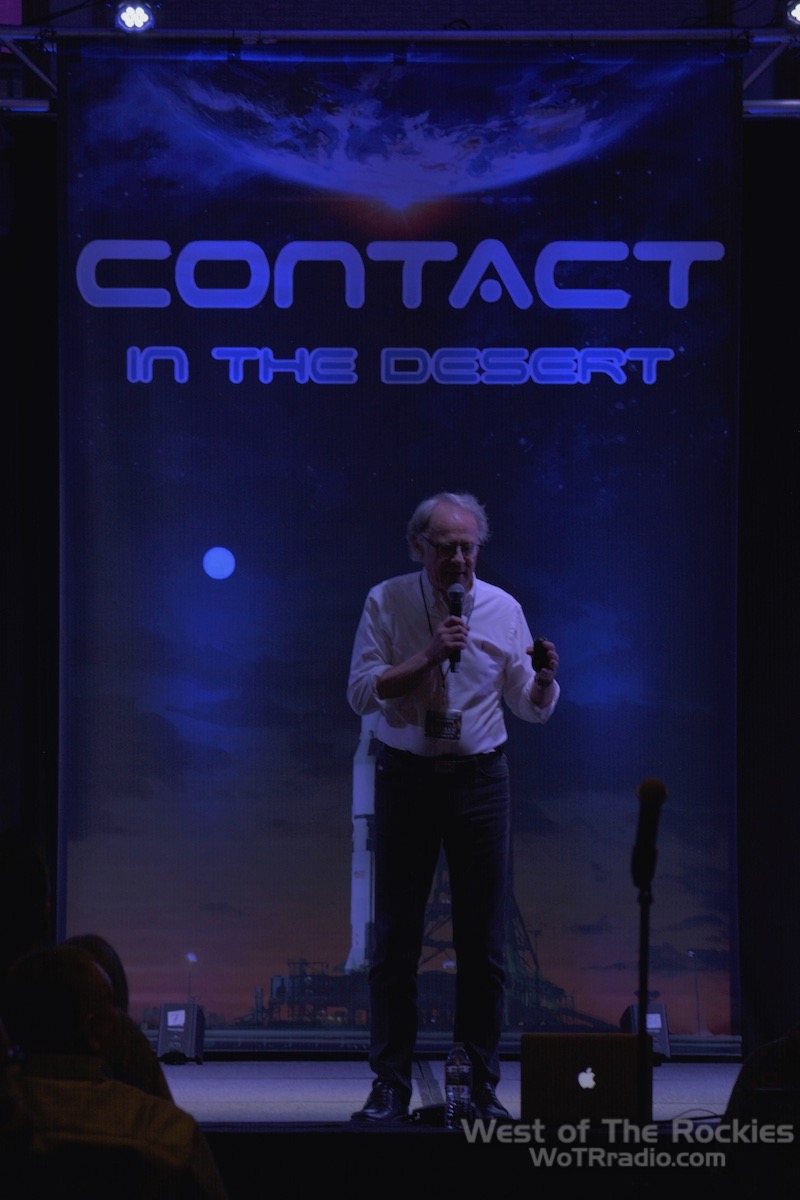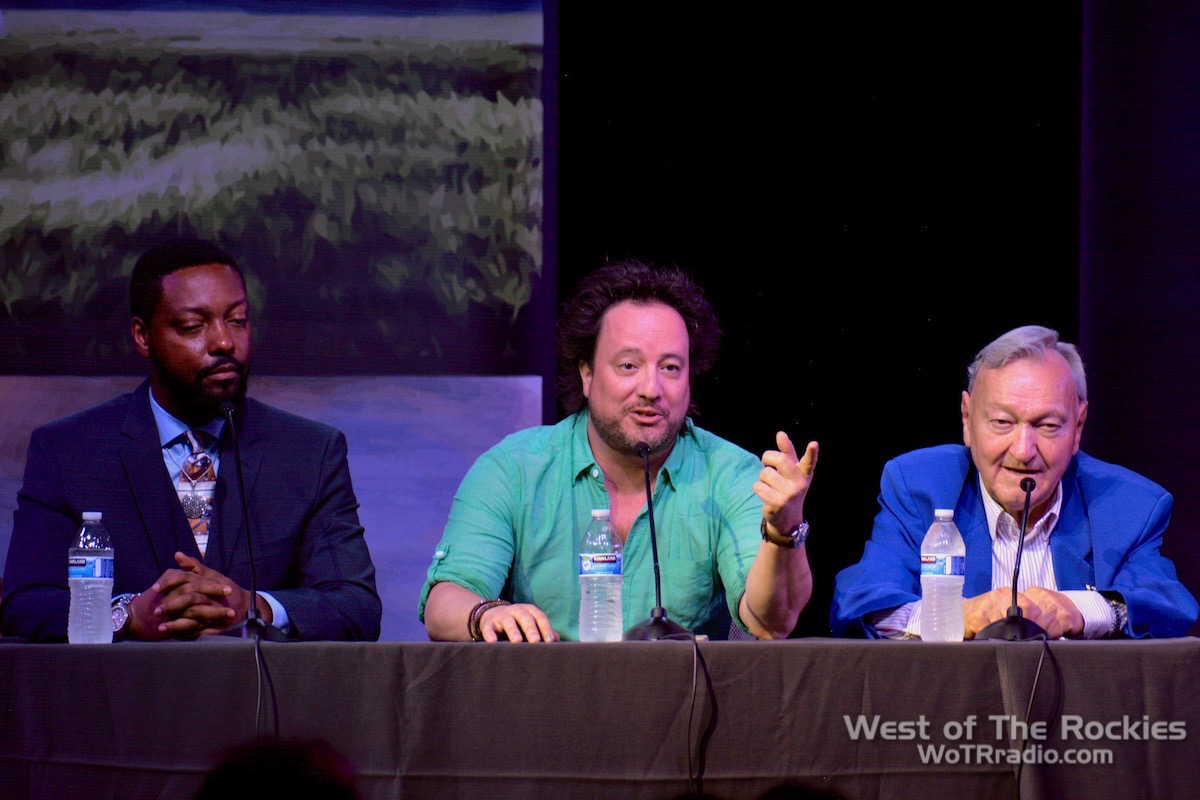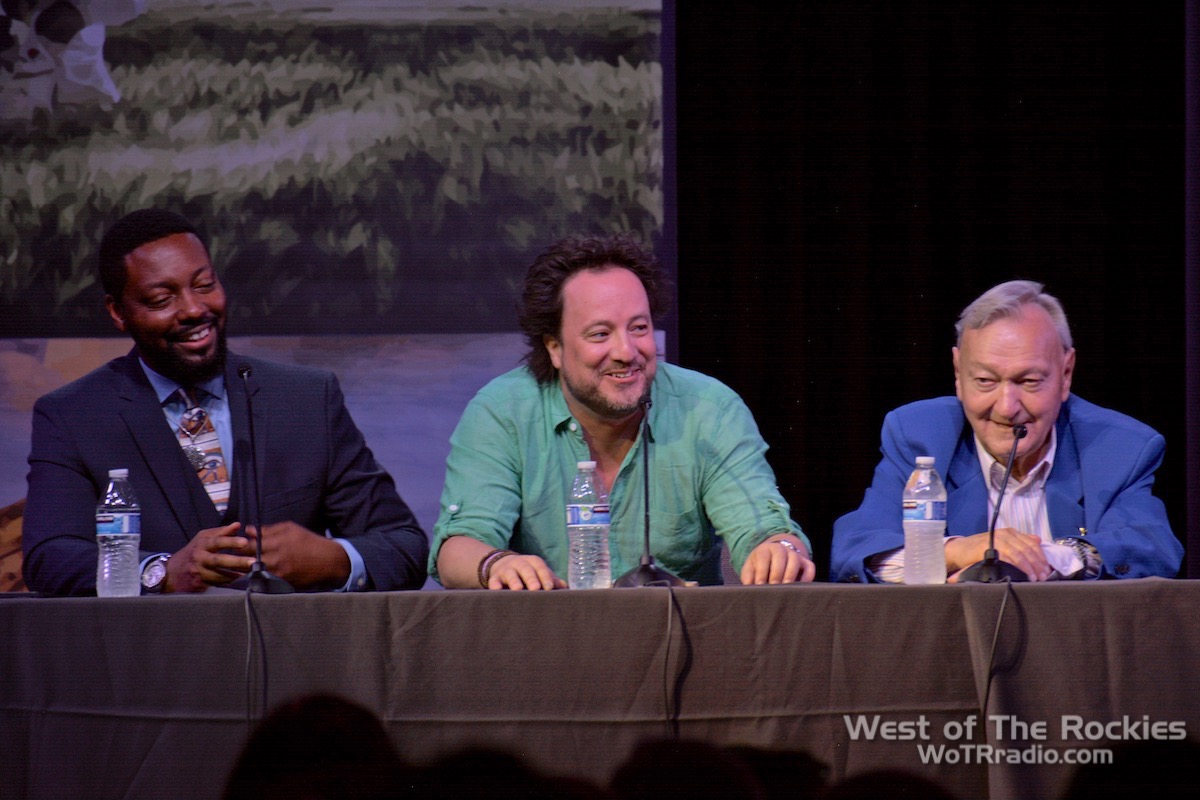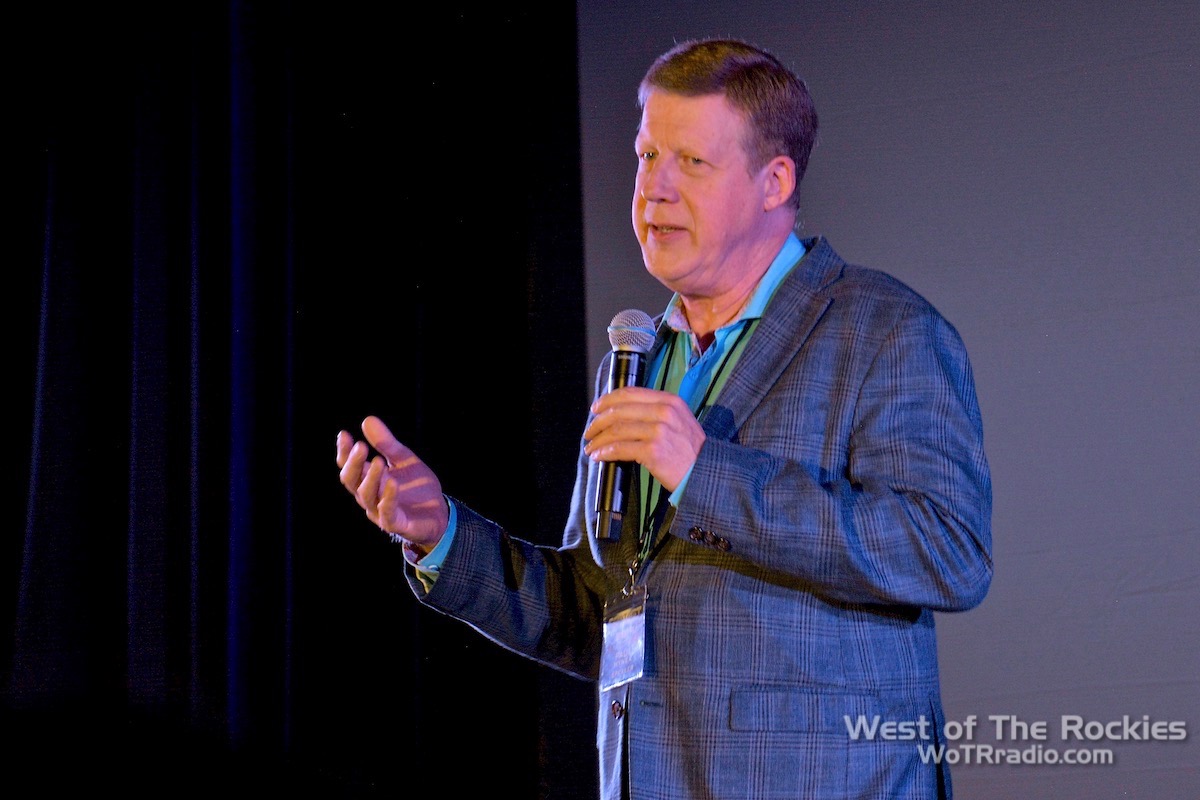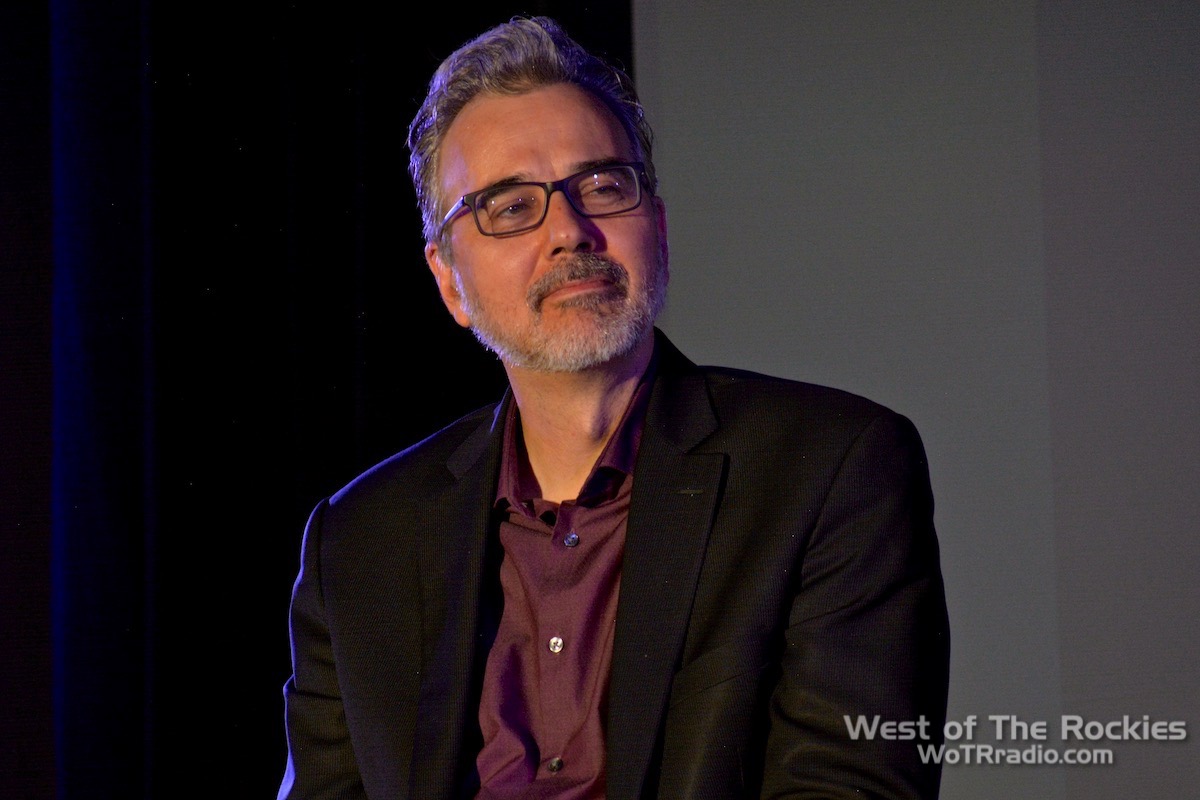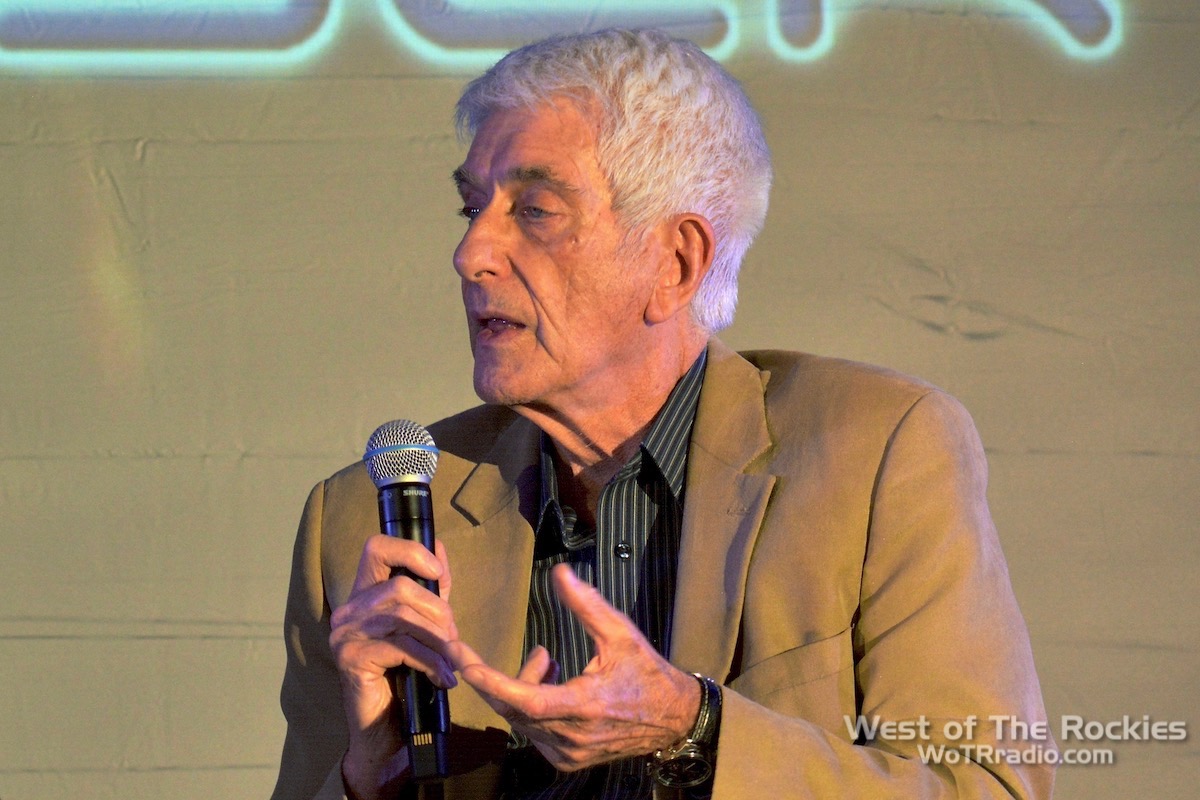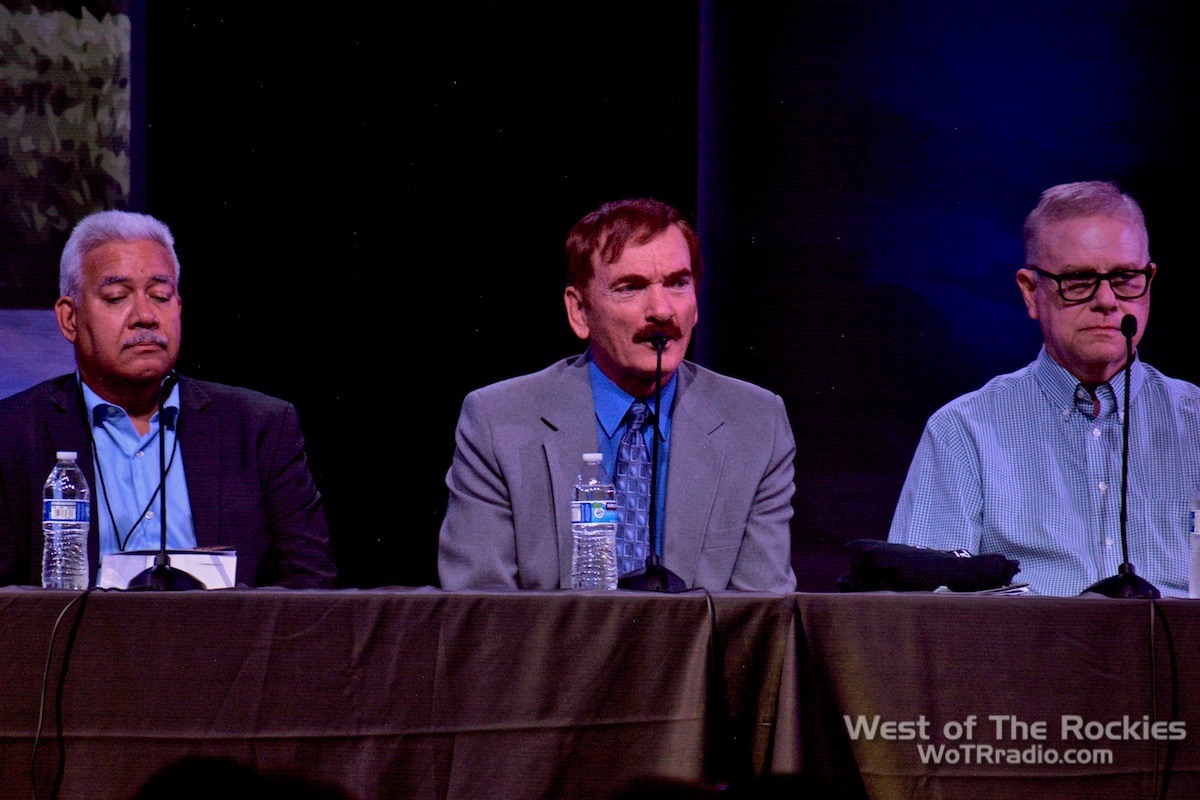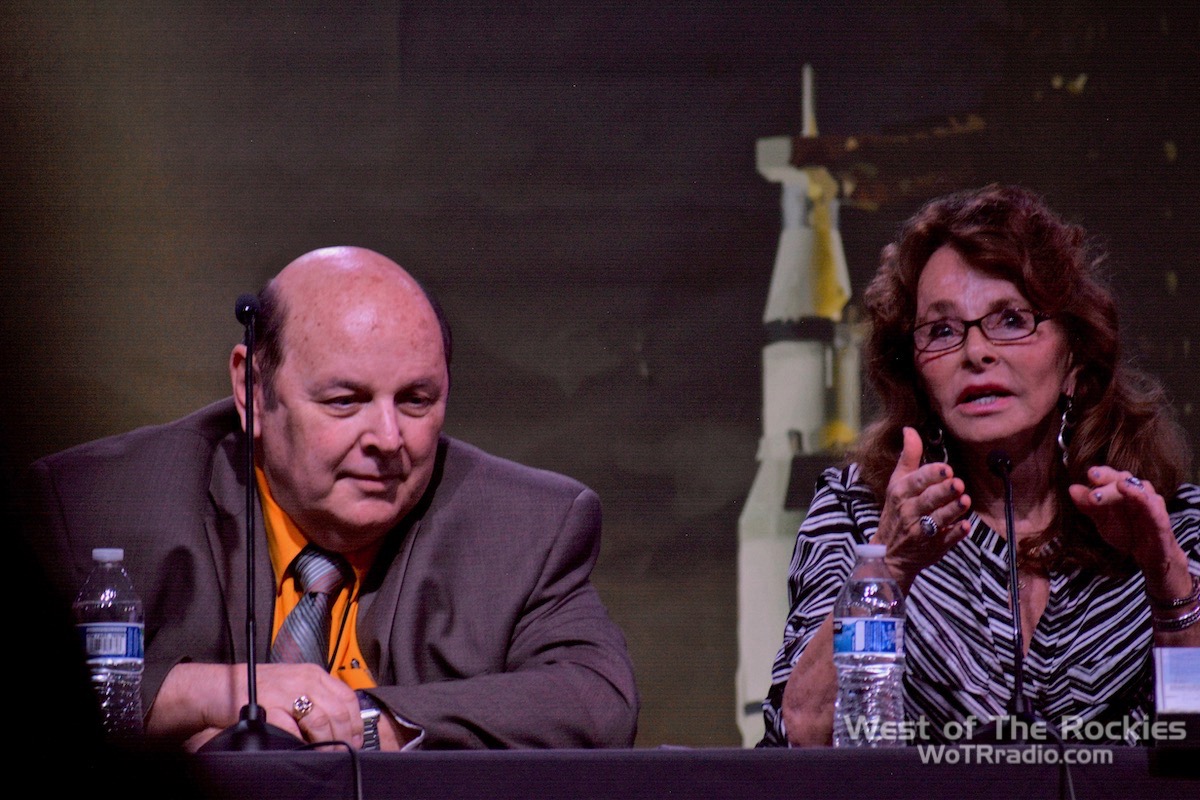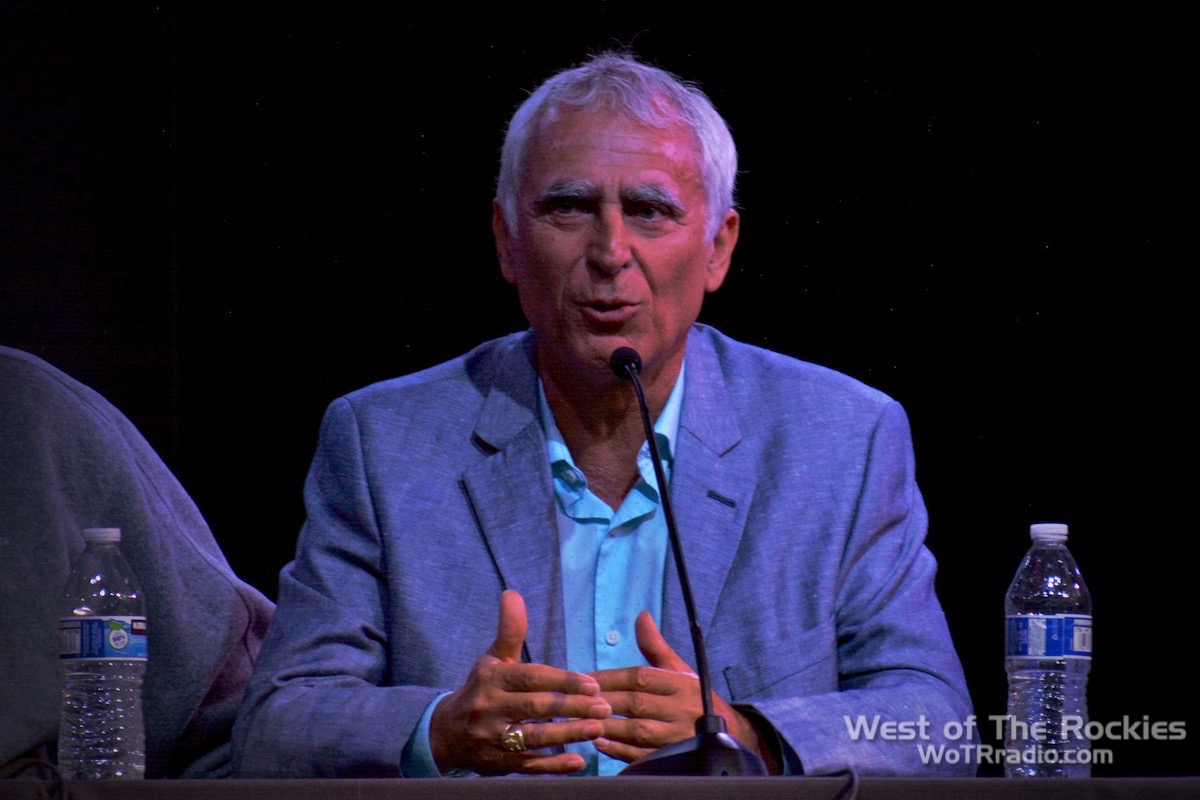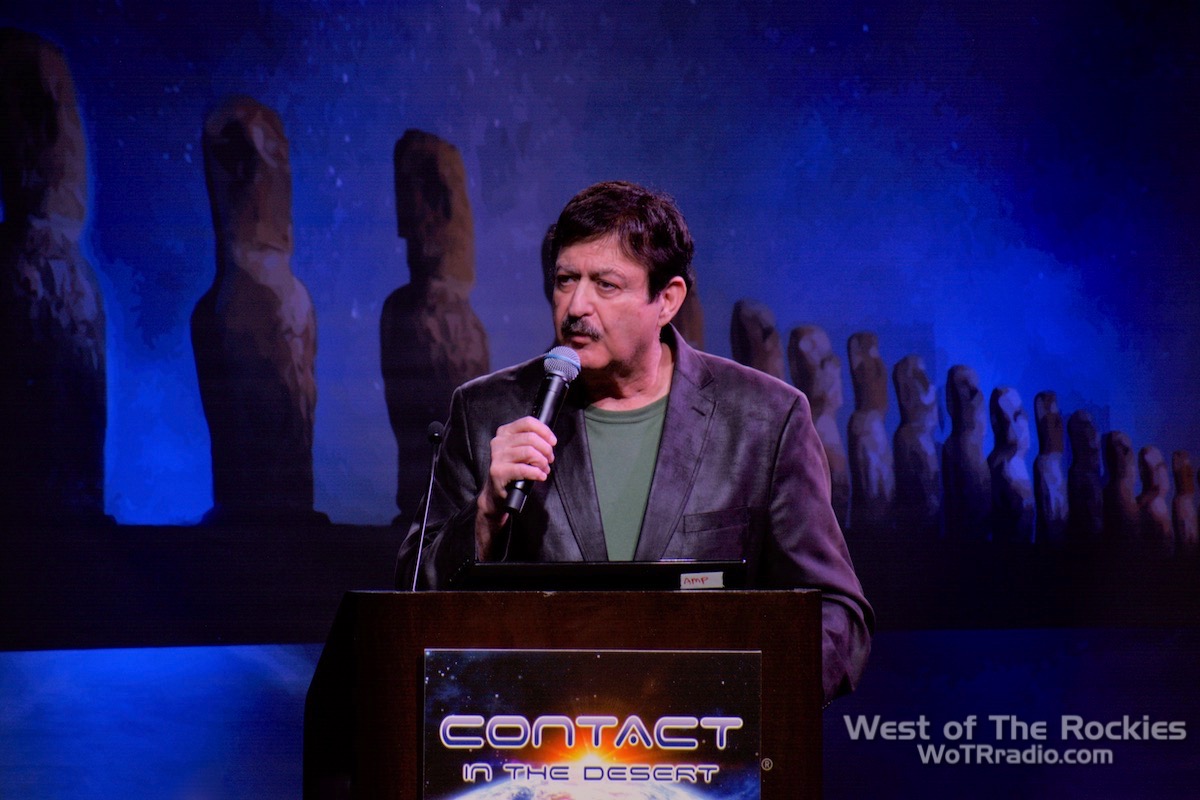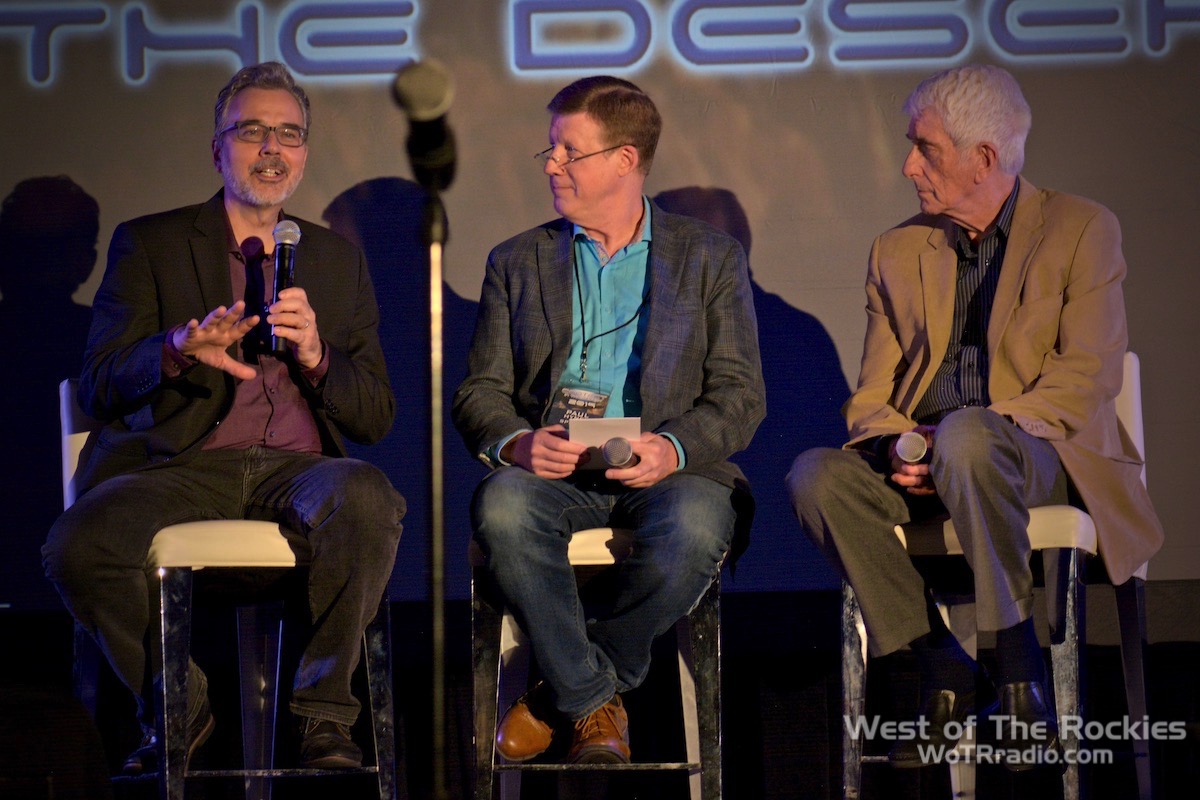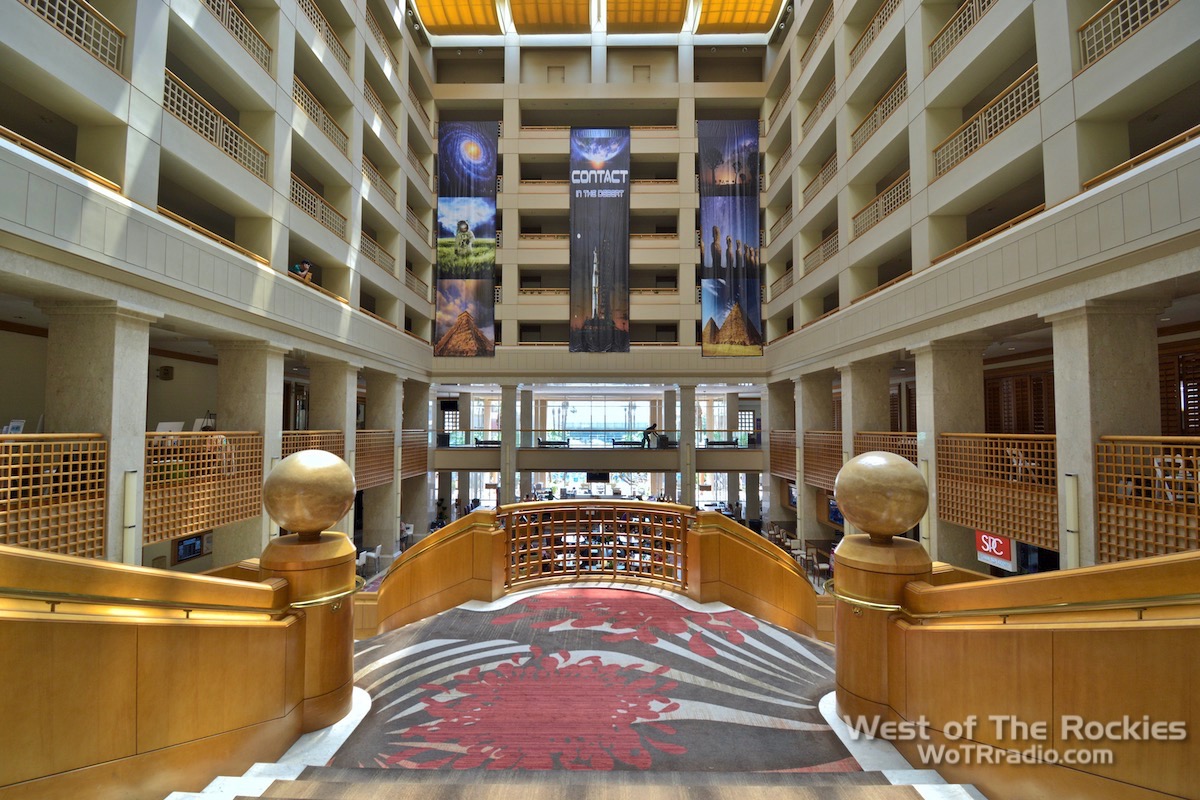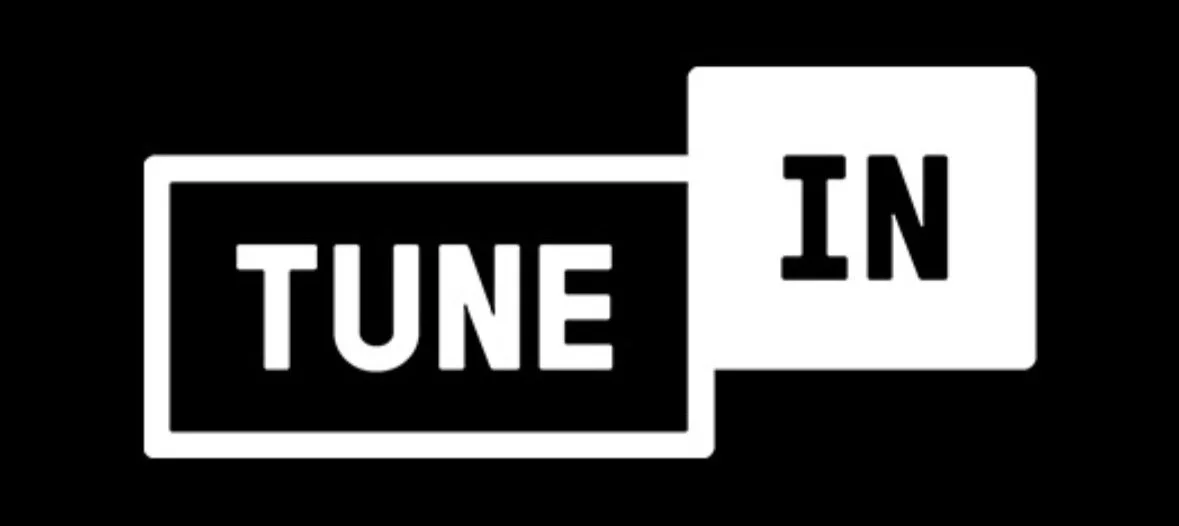Brad Olsen during his lecture. Contact In The Desert 2019.
On Monday June 3rd (2019), we returned from an amazing conference in Indian Wells, namely, Contact In The Desert. A weekend of mysteries, new scientific discoveries, introspection, debate, and spiritualism, this is one of the largest (if not the largest) UFO conferences in the world. However, referring to it as merely an “UFO conference” would in no way do it justice, since it is so much more than that. It encompasses all things New Age, mind exploratory, and fringe: topics such as ancient civilisations and archeology; conspiracies; government whistleblowers; meditation and health; and recent history are also covered. Essentially, most areas that the mainstream media and the government are reluctant to talk about. Not all of the subject matter is everyone’s cup of tea, but there is plenty to explore for all attendees. It’s a weekend of opening your mind and expanding your consciousness, and being receptive to all types of theories.
Speaker Overview
Graham Hancock while presenting his lecture. Contact In The Desert 2019.
As usual, we were presented with a mixture of mainstream public figures, as well as newer or lesser known speakers. We particularly enjoyed the larger number of newer people being introduced to the scene this year. Of course, we had Georgio Tsoukalos, George Noory, David Wilcock, Graham Hancock, Erich von Däniken, Whitley Strieber, and Travis Walton attending, alongside a handful of speakers that have been growing in popularity over the last few years, such as Billy Carson, Brien Foerster, and Brad Olsen. This time round we also got to see Dr. Michael Johnson (whom we recently interviewed), and Jordan Sather, both of whose first year it was presenting their own lecture, and had the pleasure of being introduced to Paul Hynek (who is a consultant on History Channel’s new hit show, Project Blue Book, and the son of J. Allen Hynek, the famed astronomer, professor, and ufologist). We are also always honoured to be in the presence of Jacques Vallee, whose contribution to this field of study has been hugely instrumental. It’s almost impossible to summarise the amazing line-up; in any case, we’re glad to see it continuously evolving.
The angle that speakers come from varies greatly. Some are whistleblowers, ranging from those that are coming forth to reveal information from their past line of work, to those that address more contemporary matters. Some speakers talk about things of a far more intangible nature, such as interdimensional travel and spiritualism (e.g. Laura Eisenhower and Honovie Strongdeer), whilst others come from a historical research viewpoint, archeology and anthropology, or other areas of traditional academia, such as psychiatry (e.g. Brien Foerster, Brad Olsen, Ben Hansen, and Michael Johnson). The topic of disclosure is multi-faceted, and it’s great to see that CITD tries to keep things as broad and unbiased as possible.
Vendors.
From L to R: Billy Carson, Georgio Tsoukalos, Erich von Däniken, Hugh Newman, Brien Foerster. Contact In The Desert 2019.
This is also reflected in the vendors attending the conference. Jordan Sather made a great point in advocating a “holistic view” of disclosure, emphasising that it is not just about UFO disclosure, but, in fact, so much more than that. There were the traditional vendors selling homemade jewellery, clothing, and other accessories, sometimes specifically UFO/alien related, other times more generically spiritual in nature; there usually also tend to be a handful of people selling crystals, Tibetan bowls, and other items that are seen as raising positive energy and improving a “high vibrational lifestyle”; in recent years, we have also seen an increase in health supplements or other health-related lifestyle products. Overall, we think that promoting a healthy lifestyle is important and fits in well at a conference promoting awareness, open-mindedness, and mental & spiritual wellbeing. However, some of these vendors did indeed seem a little out-of-place, seemingly profiting from people who are trying to live better, but with no clear sense of having any interest in the UFO and New Age scene itself. Some of these vendors clearly fell under a network-marketing model, making us question how far off from a traditional pyramid scheme they are. Of course, it’s difficult to generalise, and we have no doubt that plenty of these vendors do indeed have a direct interest in improving the world and the way in which people live. I think buyers just need to be aware and make their own judgements. One vendor in particular stood out (Health & Beauty Connection): they were selling vibration plate exercise machines (as well as providing, what we assume were, test workout sessions), and were stationed along the back wall of one of the main presentation rooms. Apart from exercise machines being somewhat unnecessary and misplaced at the conference, they actually had the machines running during the lectures, with people on them, creating a rather annoying distraction. There may be a few vendors that CITD wants to think twice about next time, or perhaps they need to reconsider the application restrictions.
One of the vendors, Charn Khurmi, of Mystic Earth Gems. Contact In The Desert 2019.
Another vendor that stood out, in a far more positive light, was the Starfield Foundation, led by Carol McLeod, a lady that we just so happened to get talking to on our last evening there (video interview to be uploaded at a later date). They describe themselves as falling under the topics of “alternative Science, Symmetric Field Physics, New Age Alchemy, and Interdimensional Communication.” Carol’s friend, Aayti Olson, was a clairvoyant active in the late 50s and early 60s. She began receiving communication from alien beings, and thus started to document this over several years of experience. Unfortunately, she died before publishing any of it. Carol carried Aayti’s legacy, and has since published two volumes, titled, “Alchemical Manual for this Millenium (Volumes 1 and 2).” Not only that, though, but she now also frequently receives visits and information from these so-called “star people.” One of her main goals is to ensure that the books remain free to download; however, that means that she has to support herself and the continuation of this project via other means. As a result, she began making jewelry, accessories, and other (usually) clay-based artefacts. Carol’s designs are beautiful, her mission statement is extremely commendable, and we certainly hope to hear more from her in the future.
Also, we’d like to give a shoutout to Charn Khurmi, a custom jewellery designer for Mystic Earth Gems, who was particularly kind and positive, and was evidently passionate about his work. The stall sells a beautiful range of healing rocks and minerals, as well as handmade jewellery with semi-precious stones set into it.
Special Highlights
George Noory hosting a panel. Contact In The Desert 2019.
Brad Olsen’s popularity has been steadily rising over the last few years, and rightly so. Intelligent, yet humble, he is exactly the type of researcher we need in this area. Well-versed and well-travelled, he has published books with a wealth of information. This year, his main focus was the topic of Antarctica. Talks surrounding this were already picking up last year, but we saw an even larger uprise this time around. What’s so special about Antarctica? Well, given that it’s one of the most desolate and least explored continents, there are a lot of questions. Are there any secret military projects going on there? Did the Third Reich of Germany set up a base there? Are the Nazis involved in anyway? Is there a hidden underground alien civilisation living in those areas? At the end of the day, there is so little we know about this continent, and it’s clear that we have absolutely everything still to learn. (Check out our last interview with Brad Olsen.)
From L to R: Richard Dolan, Paul Hynek, Jacques Vallee, during the “Project Blue Book” lecture. Contact In The Desert 2019.
As mentioned before, we are always honoured to see Jacques Vallee. A huge contributor to this field of research, with his first major publication coming out in 1969 (Passport To Magonia), he is still an irreplaceable source of knowledge and wisdom. He was interviewed by Paul Hynek this time round, accompanied by Richard Dolan, and they presented the first episode of Project Blue Book as part of the speech/interview. Project Blue Book is based around the central character of astronomer, J. Allen Hynek, whom Vallee spent some time with. He shares a number of anecdotes contemporary to the time, including some occasions where he met with Hynek. It was almost surreal to see him sharing these stories with (J.A.) Hynek’s son, Paul. The lecture was fun and entertaining, as well as informative.
Michael Johnson was a fantastic new addition to this year’s line-up (keep an eye out for the upcoming interview). His delivery is colloquial and charismatic (though not short on academic content), peppered with a few jokes here and there. He makes the audience feel welcome and involved, and the friendly university professor vibe definitely shines through. His lecture was titled, “Neuroscience and Interdimensional Communication: An Introduction,” which is interesting in itself, but coming from someone who is a former psychiatrist of Harvard Medical School, this is even more fascinating. It’s not easy to break away from the templates and restrictions of an academic background, both on a personal and social level: his thinking-process remains logical and structured, while venturing into topics that others might deem “cooky” and just not worth exploring. We look forward to hearing more from him, and are in the process of setting our next interview date.
An All-Start Panel. From L to R: Victoria GeVoian, Rey Hernandez, Travis Walton, Whitley Strieber, Kathleen Marden, Mary Rodwell, James Gilliland, Yvonne Smith. Contact In The Desert 2019.
Clyde Lewis is continuously growing in popularity. His 5-hour-show, Ground Zero, airs every evening on weekdays, and has recently surpassed Geroge Noory and Alex Jones’s audience in terms of streaming numbers. He had a number of appearances this year, including a lecture (“The Secret History: An Atomic Alien Theory & Its Connection To Artificial Intelligence); a workshop (“Ancient Alien Artifact -- Oumuamua: Disclosure or Confirmation?); and being the host of the panel, “Science of UFOs, Technology & The Quantum Field.” This gentleman truly has a huge array and depth of knowledge to share, so if you haven’t heard a show of his yet, or haven’t read one of his articles, do consider doing so.
Drama This Year
The vibe was palpably different this year, and a little bit of unexpected drama ensued. The presence of QAnon supporters definitely seemed stronger this year; political and Trump-related talk is on the rise, and with that, naturally, comes an increase in disagreements and arguments.
Corey Goode was noticeably absent this year; whether that was out of his own volition, or a lack of invitation, is unclear. Perhaps he was simply busy or unable to attend for other reasons. However, just as much and as fast as he gained followers, it is becoming evident that the number of people who disagree with him or think him a fraud is also rapidly growing. Goode and his protege (of sorts), Jason Sather, have particularly been in the limelight recently. They are claimed to have doxxed several alt media personalities, as well as a healthcare worker. We’re not here to give you the full story on that, nor are we here to judge, though please feel free to inform yourself on this topic through your own research. David Willcock’s name is also frequently thrown into this discussion, given his association with Goode and Sather.
The issue wasn’t just tacit, however, and culminated in a public argument/shouting-match during a Q&A session. Sather had just completed his lecture, and moved the Q&A session to a grassy area outdoors, in order to allow for the next speaker to start setting up. During this discussion, Ryan Gable (of The Secret Teachings) joined the group and started questioning Sather, particularly as regards the doxxing allegations. Gable was blurred out in a screenshot of the interaction (by Sather), though we know for certain that he has no intention of remaining anonymous. Gable himself posted a video diary/vlog entry of his experiences regarding this. The debate certainly escalated, and there were various points-of-view regarding it. Some attendees were willing to listen to Gable, and genuinely wanted to know what he had to say: after all, a fair opinion cannot be reached without hearing both sides of an argument. On the other hand, quite a few attendees thought it disrespectful and were extremely irritated and thrown off by the interruption. Was this a little cult circle attempting to block out all questioning and media scrutiny, or were they conveying truthful information that was rudely interrupted by a skeptic that was trying to shut it down? It’s hard to tell, and we won’t propagate either viewpoint unless we’re certain. Nevertheless, whether rude or not, we appreciate Gable’s sincerity and drive to find out the truth: extreme views require extreme oppositions, and he is one of the very few that dares to venture into deep waters and question things publically that others wouldn’t. We all need to keep in mind that this is necessary for political, philosophical, and spiritual discourse, we all need a broad variety of opinions to keep us vigilant and on our toes.
It’s also interesting to know that Sather’s lecture was blatantly censored at the time (there may be an update since the time of publishing this article). The DVD of his lecture was not released, unlike all the others, and the excuses were apparently inconsistent. However, Sather managed to get ahold of an audience member’s audio recording of the lecture, and it has been published on his YouTube channel. Check out this video and decide for yourselves how accurate Sather’s description of “censored in the desert” and “no contact in the desert” is. At very least, this move was questionable on CITD’s behalf, and I’m sure the audience would like a genuine explanation as to what happened.
On a personal level, we also experienced our fair share of negativity this year. There’s definitely been a shift. There were several people in the audience that were extremely rude and condescending: there was a lady who told us to move, because we were blocking her view of the stage (there were plenty of other spaces, and we even offered to swap spaces with her, but she angrily grunted, “NO”); a handful of audience members told us to put our cameras away, before venturing into some long speech about how it’s not allowed (upon seeing our media passes, they abruptly put that to a halt, though many continued to lecture us on other matters); there was even an event-organiser that literally pointed a finger at us, as if she were a kindergarten teacher, telling us to put our camera away (we later met her again, and tried to be as amicable as possible; it seems that she noticed our passes, and suddenly agreed that we were allowed to take photos; however, as we extended our hands to shake with her, she recoiled and we were met with further animosity; understandably, she was worried about people filming the content of the talks and publishing it on YouTube; however, we didn’t appreciate the condescension and being treated like criminals who were about to profit off posting their speeches online; we have never ever done so, and have no intention of doing so).
Entrance to the venue, Indian Wells Renaissance Spa & Resort. Contact In The Desert 2019.
That aside, we feel that CITD needs more younger attendees. Since its move to the Marriott Hotel venue, we have witnessed a decline in younger attendees, as well as an increase in older and surprisingly conservative people. Sometimes, it really does feel like you’re being looked down upon, especially in the way that people talk to you. On the other hand, it’s important to mention that the positive and friendly attendees always outweigh the contrary: young, old, or in between, you get characters of all types, and we met a huge number of amazing people from all kinds of backgrounds, including plenty of great staff and volunteers. It would just be nice to see a more balanced audience, and part of that will be having to move towards more affordable pricing.
Other
We noticed that the presence of GAIA was not as strong this year: they were still one of the main sponsors, but the push to support and subscribe to them was certainly diminished this time round. We wonder whether this might have to do with the controversy that has been witnessed amongst the public over the past couple of years, including the rather questionable claims of GAIA being Luciferian, the departure of Willcock and Goode, and the claim that the online platform is run by people who are your standard businessmen and investors, having no interest in the cause itself. Many negative customer reviews have popped up around the Internet, as well as plenty of less-than-flattering Glassdoor reviews, and a huge number of articles written about GAIA. (For instance: “All they care about is the bottom line, to profit off the mindful movement. They'll woo you with their mission, [...] but it's one of the least mindful companies out there.” -- Anonymous GlassDoor Review.) Again, we’re not here to judge the situation for you, we’re merely passing on the information that we have. On a personal level, we have met and interacted with a handful of GAIA team-members, and they have all been extremely friendly. Apparently, this is not the case regarding the CEO, but since we haven’t met the upper tiers of GAIA, we obviously can’t say that for certain. It would be a shame, since the idea behind GAIA is a positive one. Their growth or decline will speak for itself.
View of the Crystal Amphitheater at Contact In The Desert 2019.
It should be noted that Graham Hancock was one of the featured guests this year, and it was, as always, amazing and inspiring to watch and listen to him. Talking to various people that attended the conference, the name “Graham Hancock” pops up again and again as one of the audience’s favourite speakers. His lectures are warm and enlightening, approaching these topics from a variety of viewpoints, including spiritual and psychonautic. His messages are usually products of first-hand experiences, and he draws the audience in on a personal level, as if he had known you all his life.
However, though only a minor hiccup, it was unfortunate to see that Hancock was having issues with his presentation again. A couple of years back, we clearly remember the projector and room lighting being suboptimal, resulting in Hancock not being able to properly see his own powerpoint slides. Though evidently inconvenient, he was polite enough to work with the situation and continue with the lecture. Unfortunately, something similar happened again this year: used to being able to see his own Powerpoint slides and point to them via a laser pointer, he was unable to do so this year, due to the setup of the stage and projector screens. It seemed as though he had not been made aware of this, which we can only assume is annoying and inconvenient. It certainly wasn’t a major faux-pas, but the greater message that it sends is clear: it looks like CITD might need to improve in areas of organisation and communication. The audience members want to be able to concentrate on the content that the speakers are trying to deliver, not the technical issues involved. (Once again, though, we should all bear in mind that this is only their second time at the Indian Wells location, so perhaps they just need a little longer to adjust.)
Conclusion
In our opinion, Contact In The Desert still remains the top conference of its kind. There are a few little hiccups every now and then, but nothing you wouldn’t expect of an event of this magnitude.
We do still have an affinity for the Joshua Treat Retreat Center, given its hippie-esque burner vibe and beautifully peaceful Joshua Tree backdrop. Nevertheless, we also understand the need for a more formal venue, especially when it comes to space and climate. The Marriott in Indian Wells is an excellent venue in terms of being able to provide spacious presentation rooms, air-conditioning, and extra amenities such as a pool and spa for those that want to relax. Nevertheless, we must bear in mind that a Marriott is not exactly the cheapest of hotels to reside at, making it a little more difficult for younger or less financially-fortunate people to attend.
But the beauty of being able to lie outside on a picnic mat and listen to lectures, or sit amongst a pool of Tibetan bowls in the middle of the night, or lie in a huge open space watching Contact while at Contact In The Desert...those times were truly unique, and we hope that, at some point in the future, a perfect compromise may be reached between a spiritual outdoors experience and a comfortable indoors one.
VIDEO REVIEW COMING UP SOON.
Enjoy some extra photos from the conference:
